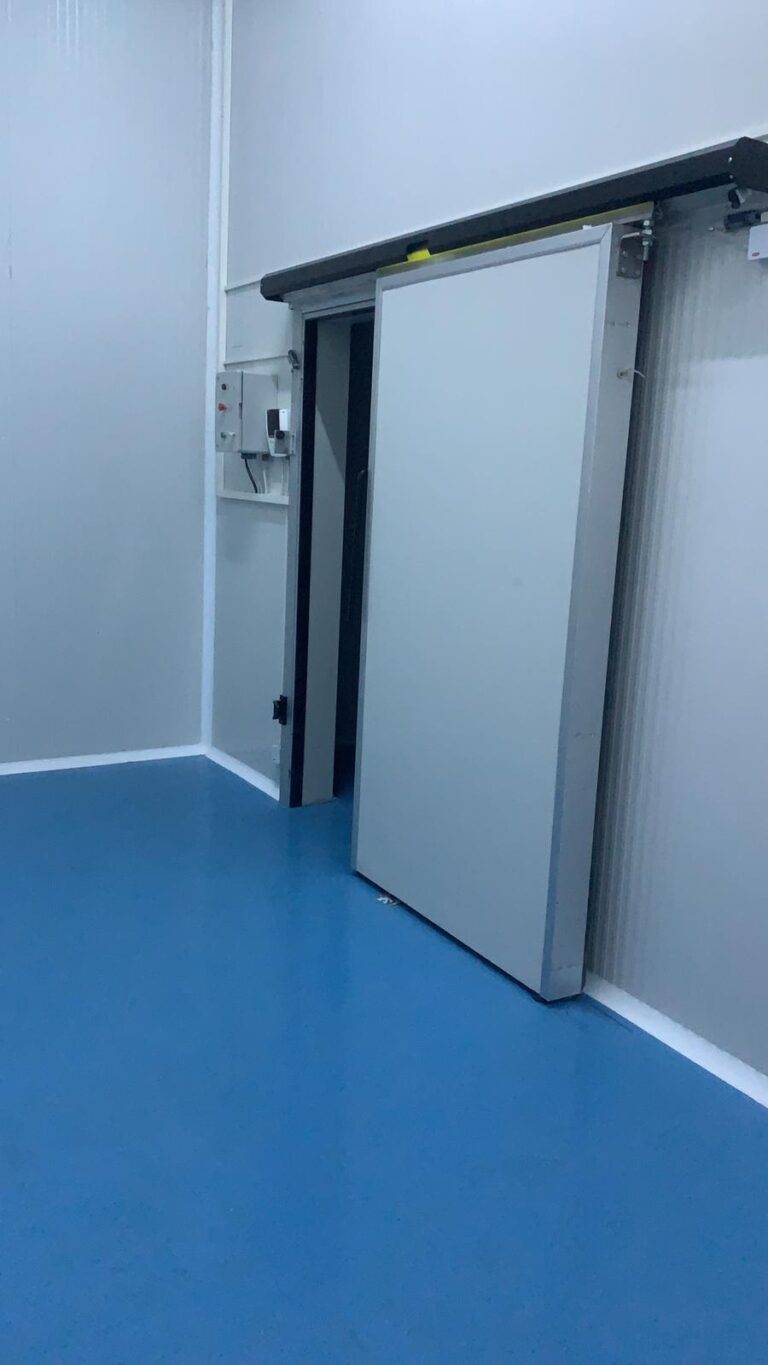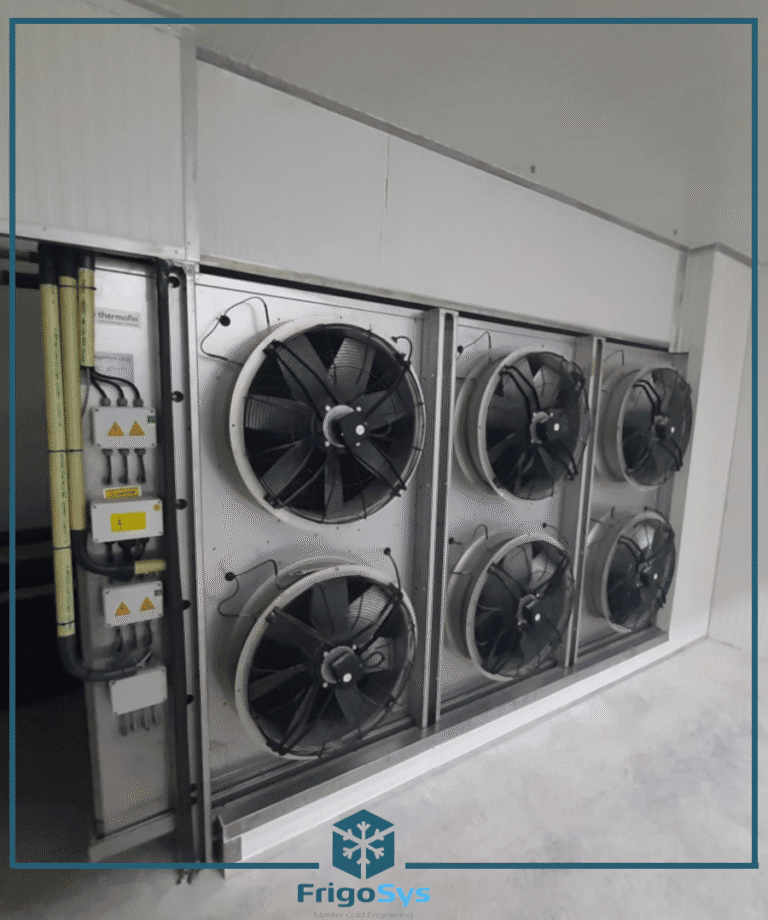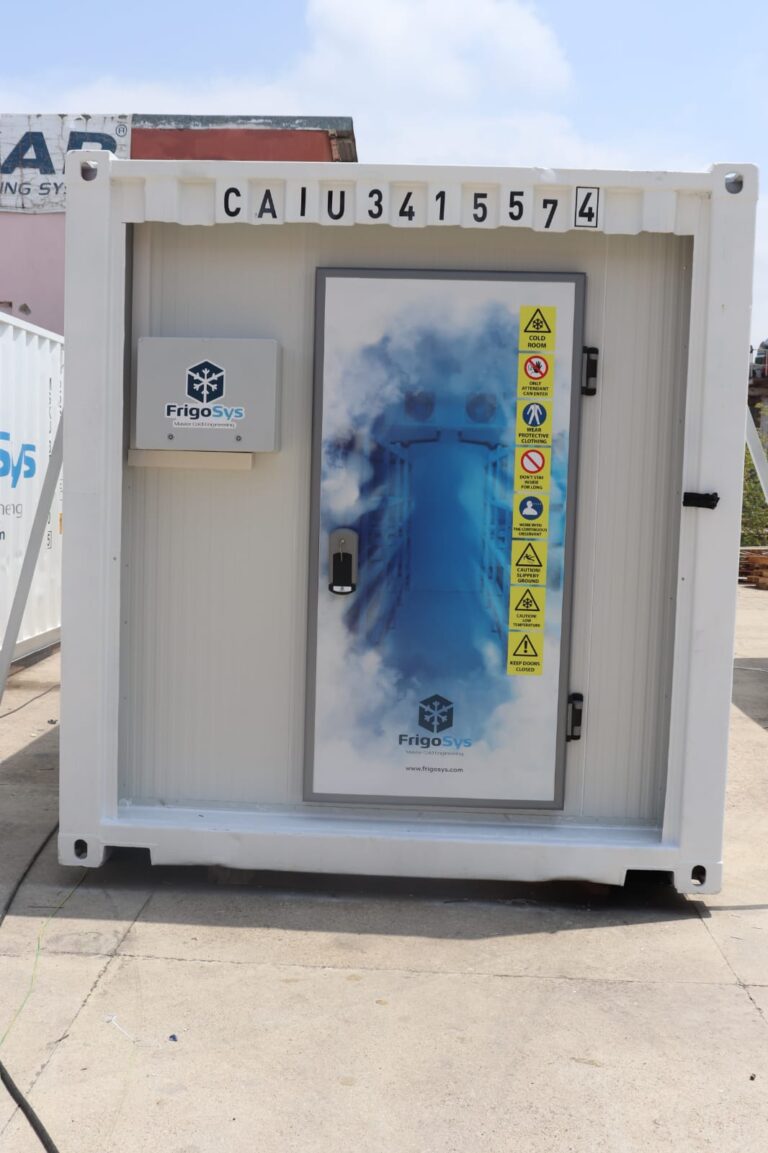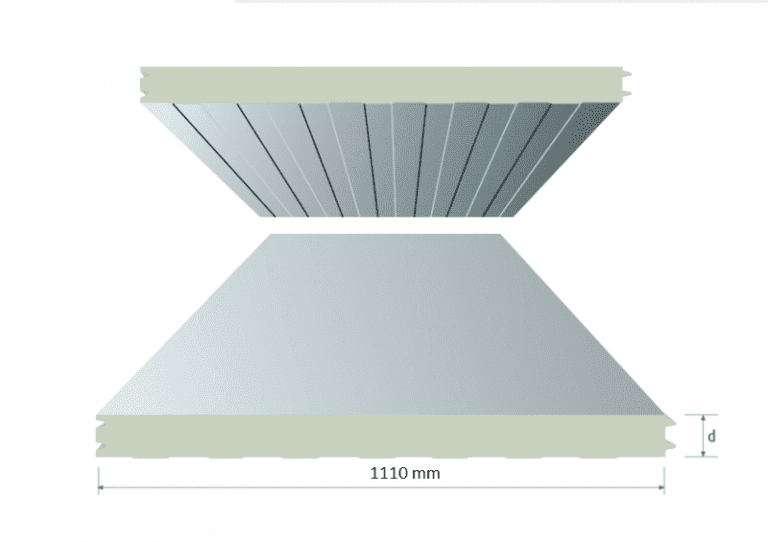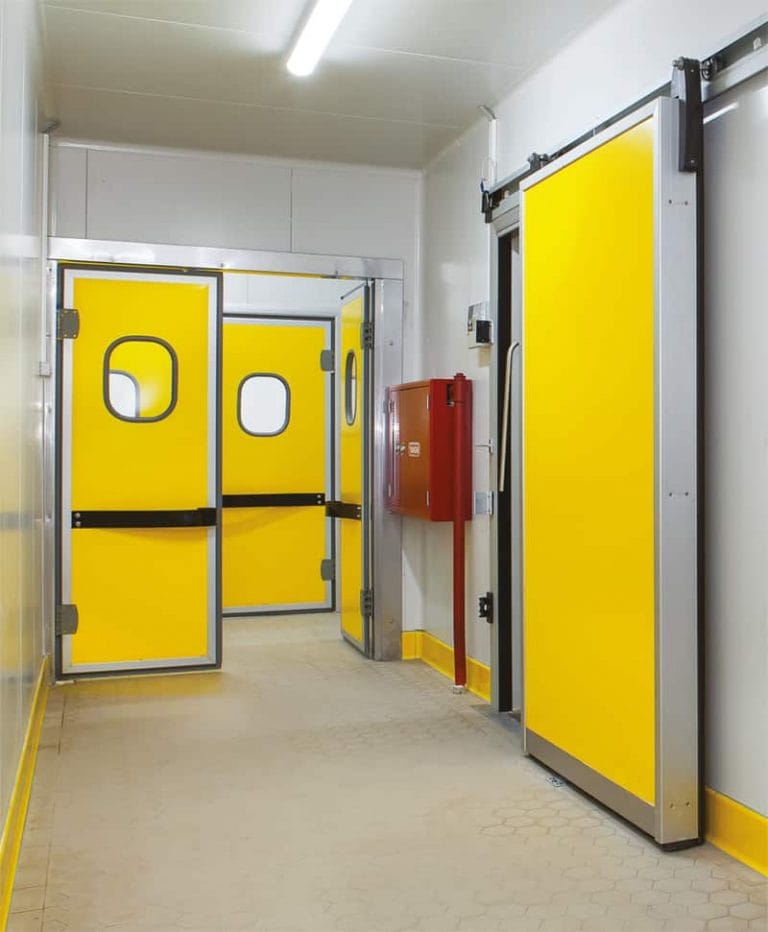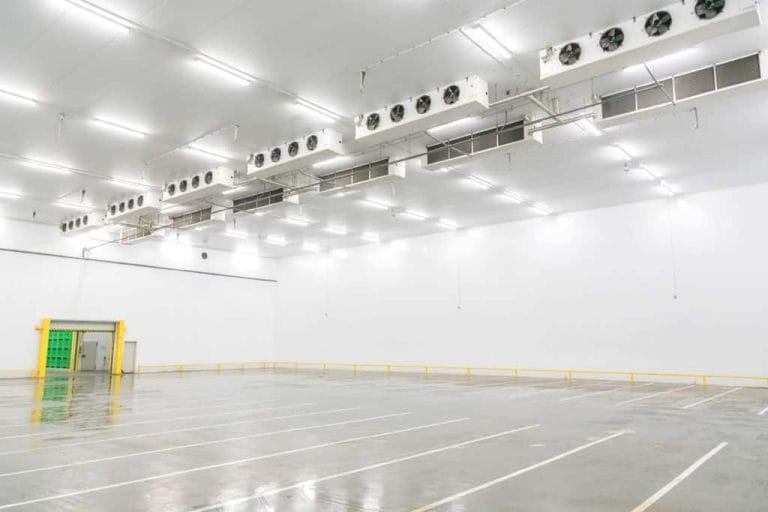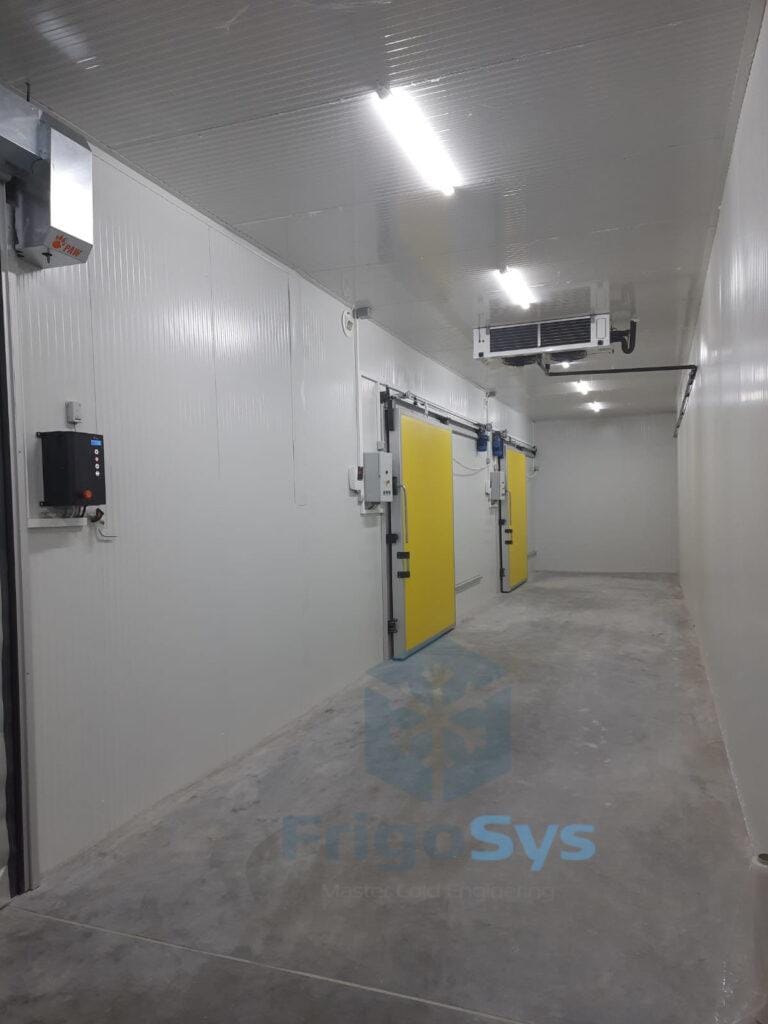Cold Storage Facilities
Cold storage facilities are designed to maintain low temperatures to preserve and store perishable goods such as food, pharmaceuticals, and other temperature-sensitive items. The crucial components of cold storage facilities include:
- Sandwich Panel: Proper insulation is essential to prevent heat transfer between the internal and external environments. Common insulation materials include polyurethane foam, expanded polystyrene (EPS), or mineral wool. The insulation helps maintain the desired low temperature and reduces energy consumption.

Cold Storage Facilities - Refrigeration System: The refrigeration system is the heart of any cold storage facility. It consists of compressors, condensers, evaporators, and refrigerants. The refrigeration system removes heat from the interior and releases it outside the facility, thereby keeping the temperature low inside the storage space.
- Temperature Control Systems: To maintain the desired temperature, cold storage facilities are equipped with temperature control systems. These systems monitor the temperature and adjust the cooling equipment accordingly. They help prevent temperature fluctuations and ensure the products remain within the required temperature range.
- Air Circulation System: Proper air circulation is crucial to distribute cold air evenly throughout the storage space. Fans and ducts are used to ensure uniform cooling and prevent hot spots or cold spots.
- Doors and Sealing: The doors of cold storage facilities should be well-insulated and have a tight seal to prevent the entry of warm air from the outside. Automatic or high-speed doors are often used to minimize the time the door remains open.
- Monitoring and Alarm Systems: Cold storage facilities require continuous monitoring of temperature and humidity levels. Alarms are set up to alert personnel in case of any deviations from the specified parameters. This helps ensure timely actions are taken to maintain the quality and safety of stored goods.
- Backup Power Supply: Cold storage facilities may encounter power outages, so having a backup power supply like generators is crucial to keep the refrigeration system running and prevent spoilage of stored products.
- Lighting: Efficient lighting systems that produce minimal heat are used inside the storage space. This helps prevent unnecessary heat gain and maintains the desired temperature levels.
- Racking and Shelving: Proper racking and shelving systems are used to organize and store goods efficiently. These systems should not obstruct the airflow and should allow for easy access to products.
- Fire Suppression Systems: Safety is paramount in cold storage facilities. Fire suppression systems, such as sprinklers or water mist systems, are installed to protect the goods and the facility in case of fire.
Each of these components plays a crucial role in the successful operation of a cold storage facility, ensuring the preservation of perishable items under controlled temperature conditions.

